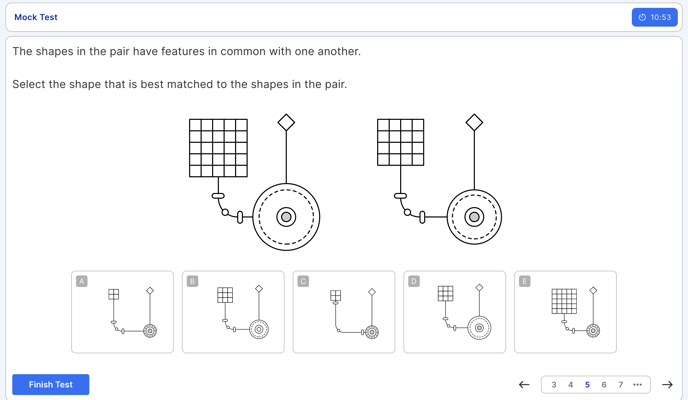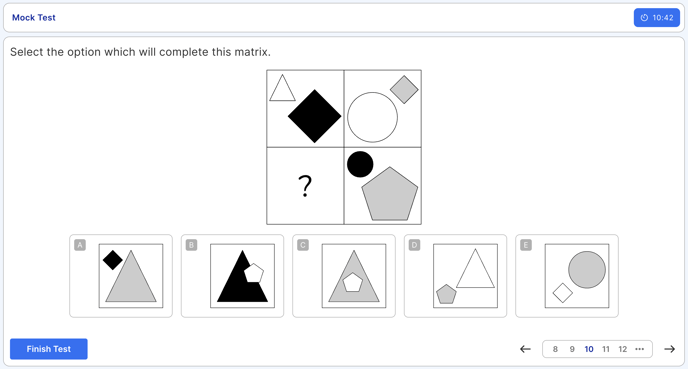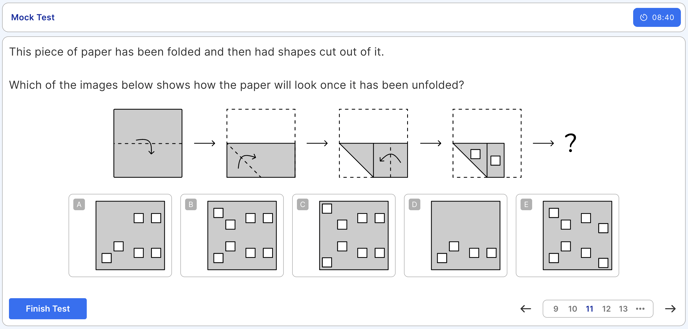Supporting your child with CAT test preparation
What to expect in the CAT test and how to prepare
What is the format of the CAT4 test?
The CAT4 is a multiple-choice, timed assessment, taken under exam conditions. The test itself is 72 minutes and is split into 3 parts. There are 8 subsections including: figure classification, figure matrices, verbal, classification, verbal analogies, number analogies, number series, figure analysis and figure recognition. At the start of each section there will be a brief overview of practice examples to familiarise the style and format of the questions.
How are CAT4 results used?
How can Atom help?
Verbal Reasoning
Verbal Classification
Identify the link between three words which are similar in some way and select the answer that goes best.

Verbal Analogies
Look at a verbal analogy in the form of ‘A=B : C=_’. Work out how the first pair of words is related to each other and then select the word that completes the second pair.

Quantitative Reasoning
Number Analogies
Look at three pairs of numbers, such as ‘4-6, 8-10, 9-_’. Work out how the pairs of numbers are related and then complete the third pair.

Number Series
Identify the rule in the number series and work out what number is needed to complete the sequence.

Non-Verbal Reasoning
Figure Classification
Identify the link or characteristic that the given images have in common and select the image that goes best with them.

Figure Matrices
Work out how the first pair of figures in the matrix is related to each other and then select the one that completes the second pair.

Spatial Ability
Figure Analysis
Look at the given image of a square that is repeatedly folded and then has one or more holes punched through it. Work out what the paper would look like when unfolded.

Figure Recognition
Locate the given target shape within the answer choices.

How to help your child prepare
Top tip!
Remind your child to read the question carefully to understand what they are being asked to do. Use the process of elimination to identify the answers that are definitely wrong to help them find the correct answer!
Verbal & Quantitative Reasoning
- Progress through the Verbal Reasoning Exam Prep Plan on Atom. Quantitative reasoning questions are included within verbal reasoning.
- The key to answering verbal reasoning questions is developing a rich vocabulary and reading is the best way to do this. Encourage your child to read a variety of literature, including fiction and non-fiction, using Atom’s Recommended Reading Lists to help them choose a book.
- Your child should write down any new words they come across in a vocabulary log. They should write down the word, along with the definition, a synonym and antonym, and an example of the word being used in a sentence to see the word in context.
- Synonyms and Antonyms are used extensively in verbal reasoning questions. Practise these by setting Custom Practices for your child under:
- English - Vocabulary - Meaning of Words - Antonyms and Synonyms.
- Your child should be confident in identifying patterns and relationships between numbers. Practise arithmetic by working through the Maths Exam Prep Plan on Atom to build number fluency.
Non-Verbal Reasoning and Spatial Ability
- Spatial Ability question types are included within non-verbal reasoning.
- Typically, the same approach can be used for all non-verbal reasoning and spatial ability question types. For every question which includes a shape or image, your child should remember to look at the key appearance features: number, size, shape, total, angle, colour, pattern
A good mnemonic to remember this is - 'Never Say Stop To A Cute Panda’!

- Encourage your child to use pencil and paper to help them visualise the answer more clearly. Eg. your child can make their own nets and cube experiment and see what happens when they fold the sides in different ways.
Top tip!
Use Atom’s CAT4 Mock Tests to familiarise your child with the style and content of the test.
Please note that you must have an Exam Preparation Plus subscription to access Atom's unlimited mock tests.